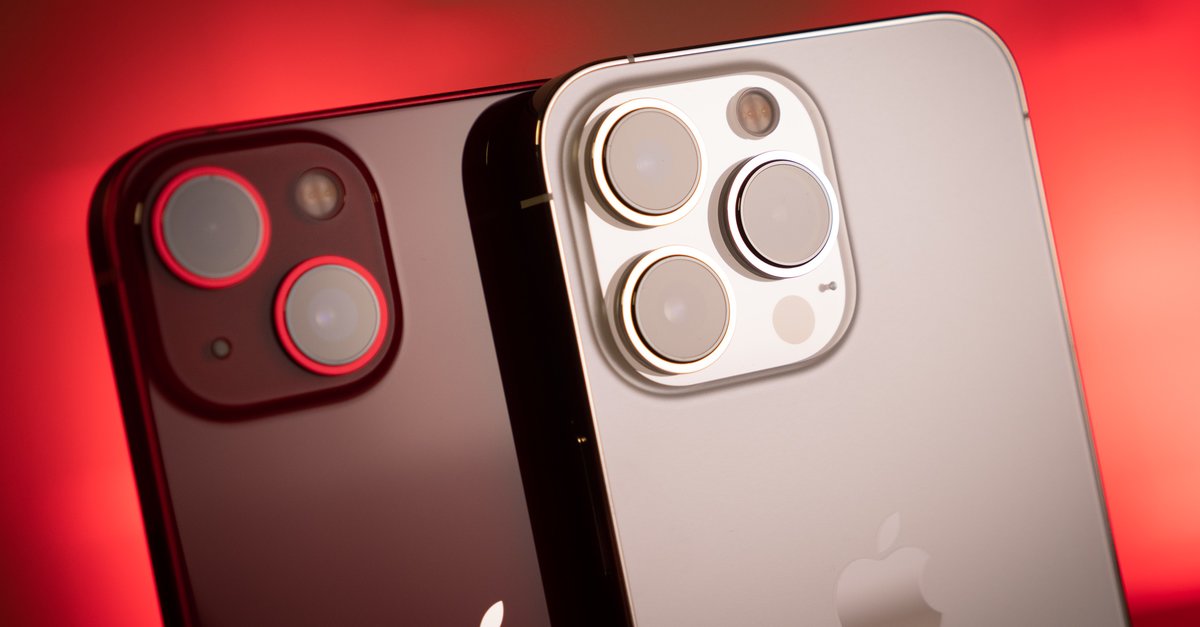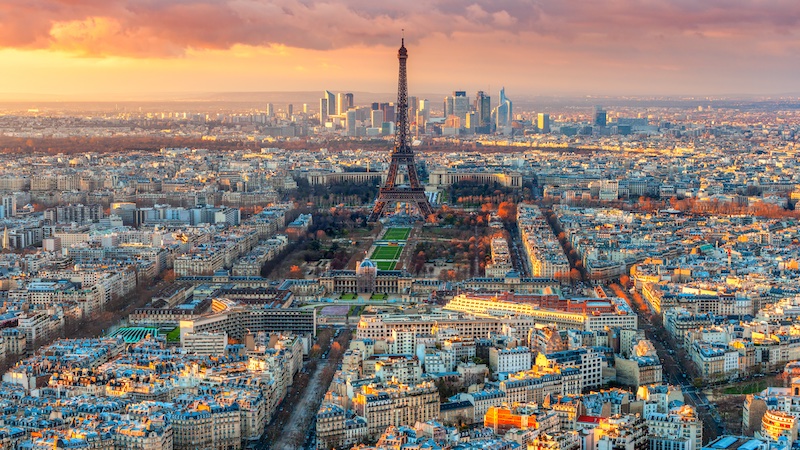Which model to take in 2022?
Another review of the iPhone 13 (Pro)? For God’s sake no, in the following lines I only want to share my own, purely subjective experiences with you and finally answer the question: iPhone 13 or iPhone 13 Pro? Which Apple cell phone is the better upgrade in 2022 for me and maybe also for one or the other interested party?
For a few weeks, an iPhone 13 Pro and iPhone 13 accompanied me in everyday life. My goal was not an imposed test report, but a personal report on my experiences. So if you miss topics, you shouldn’t be surprised. They probably didn’t play a big role for me then, I’m not much into gimmicks – sorry.
Contents
iPhone 13 Pro vs. iPhone 13: Which model to choose?
It was already clear to me in advance, after my iPhone 7 was falling apart more and more into its individual parts day after day after a last violent fall, I will probably treat myself to a new Apple cell phone at the end of my test weeks. However, two model variants of the iPhone 13 are eliminated from the outset. That would be:
- iPhone 13 mini: Too small and too bad for my eyes. Actually, I was always a fan of small mobile phones, but as already documented before, the small screen (5.4 inches) caused me problems in connection with the easy onset of presbyopia and my short-sightedness (glasses).
- iPhone 13 Pro Max: Actually optimal in terms of screen size, unfortunately not in terms of weight and dimensions. Somehow it should still fit in the trouser pocket.
In short: The The 6.1-inch screen of the iPhone 13 and iPhone 13 Pro still seems the best compromise to me. In the basic configuration, the two separate 250 euros and otherwise? What experiences have I been able to gather?
Apple’s iPhone 14: the pluses and minuses of the Pro version
The iPhone 13 Pro starts with me. Of course, if you get both models from Apple for the test period, you first go for the expensive Pro model. I noticed positively:
With slight drawbacks the camera: Without a doubt, it’s Apple’s best camera in an iPhone to date. The telephoto lens, which is only available in the Pro, is a real plus, as you will see in the sample photos below. Especially in interaction with the AI (artificial intelligence), the iPhone gets a lot out of it, more than the optics would allow. But there are also noteworthy hints on my part.




the macro function actually focuses razor-sharp from 2 centimeters, but the scenery should then be reasonably well illuminated. In the twilight, mud tends to come out – Light becomes a duty! Apropos: When it gets dark, the iPhone can get a surprising amount out of it in normal operation, but despite the camera’s optical image stabilization, further external stabilization (tripod, gimbal) doesn’t hurt. Because even if the camera impresses, it still can’t do magic and undermine the laws of nature.

I say this very consciously. Because quite a few inexperienced users might otherwise expect too much from Apple. In the end, it’s still the photographer who takes the pictures, even if he’s being helped more and more. One more word about Cinema mode, Apple’s take on the portrait feature for video recording. Looks good at first glance, but for me personally it’s just a nice toy and not a must-have. I don’t do post-processing or cutting films at the moment anyway – nice to have, nothing more.
A completely different caliber is the battery life. I didn’t measure with the stopwatch now, but before that I had to “refuel” every day. The iPhone 13 Pro, on the other hand, sometimes does without a power supply for two to three days – with moderate use. This is progress that you don’t see directly, but you can feel it all the more – wonderful.


On the other hand, you can clearly see the OLED screen. This is a revelation for anyone who, like me, was used to the “LCD sparkles” of the iPhone 7. But how much do you perceive the maximum refresh rate of up to 120 Hz? Since I’m not necessarily the big player on the iPhone, the feature is useful for the time being in “scrolling orgies” in Safari. In this case, you actually notice it first when compared with the iPhone 13, which has to be content with 60 Hz.
Worlds are not in between, because the screen of the little sister model is bright and clear, the slight motion blur can only be recognized if you deal with it like I do and become aware of it. Android phones will probably benefit more from the 120 Hz display, on the iPhone it’s more of a nice extra. A gimmick that can also save power, because if necessary and possible, images are updated more slowly – so energy is not wasted unnecessarily.
I was also impressed by the sheer speed of the iPhone 13 Prowhich you can feel in a direct comparison with my old iPhone 7, even with simple things like building the website – there are actually several years in between.
And what bothered me about the iPhone 13 Pro? Actually almost nothing … at least nothing that has to do directly with the model itself, rather with the peculiarities of Apple cell phones, as we have known them since the iPhone X. So I had to get used to the notch at first, not because of the display notch itself, but because of the lack of information in the menu bar. For example, I have to use the control center or a widget to see the percentage of the battery level, and I can no longer tell if an alarm is active because the alarm clock symbol is missing.
And yes, I miss Touch ID. In times when masks are part of everyday life and undermine face recognition, a fallback technology like the fingerprint sensor would be a good thing. Unfortunately, Apple sees this a little differently with the iPhone 13.
All models of the iPhone 13 in our overview:
iPhone 13: how does the standard model fare?
So far and so well, the iPhone 13 Pro does well in everyday life. But what do I do with the normal iPhone 13 now? I also used the cheaper sister model, after all I want to compare the siblings directly.
The form factor is almost identical to the Pro, apart from the fact that the case surfaces of the 13 are glossy and the side edges are matt, with the Pro model it is exactly the other way around. But I sense something immediately: The iPhone 13 is much lighter, while the iPhone 13 Pro looks more massive. A look at the data sheet confirms my assumption: 173 grams vs. 203 grams. The 30 gram difference sounds like little, but it feels like more.
I have to do without macro function and telephoto lens. But I really miss it in normal everyday life when I’m not testing smartphones, rather less. Tip: At least the macro function can be imitated with tricks – see, for example, the “Halide” app. Apart from that, the camera is identical and takes photos that are almost as good as “2. Class” doesn’t feel like this.
When it comes to battery consumption, the Pro has a small advantage, which is not overly clear in practice. Both smartphones are great in this respect and can hold their own against the competition.
My personal conclusion: Logic wins
Back to the original question: iPhone 13 or iPhone 13 Pro? For me personally, the decision is now clear: I choose the standard version. Why? The lower price and the lighter case speak for the device. In return, I can do without the telephoto lens and the macro function. It’s the sensible choice. Specifically, it is like this: What I like about the iPhone 13 Pro, I also find in the iPhone 13. The rest is an accessory and not decisive for my purchase.
Not that we misunderstand each other. The iPhone 13 Pro has its place. But ultimately, very few buyers really “need” it. I would like to agree with the assessment of my dear colleague Stefan Bubeck from 2019. When he tested the iPhone 11 Pro, he summed it up: “You don’t need it. I do not need it. Nobody needs it. But we all know: “Need” and “want” are two different things – you have to differentiate a little bit, don’t you?” Well, I have the “want” under control now, for me reason and logic prevailed and with it the iPhone 13.
Based on personal experience, I actually bought the iPhone 13. In the version with 256 GB memory, color variant “Polarstern” – optically very classic and yet with a certain pinch of extravagance. The aluminum frame doesn’t just look silver, with a touch of bronze it almost becomes a little “golden” in the end. This brings back memories of my iPhone 5, which accompanied me for many years before the iPhone 7. Its DNA is unmistakably anchored in the iPhone 13.
Note: For the field report, Apple provided me with an iPhone 13 Pro and iPhone 13 for the corresponding period.



